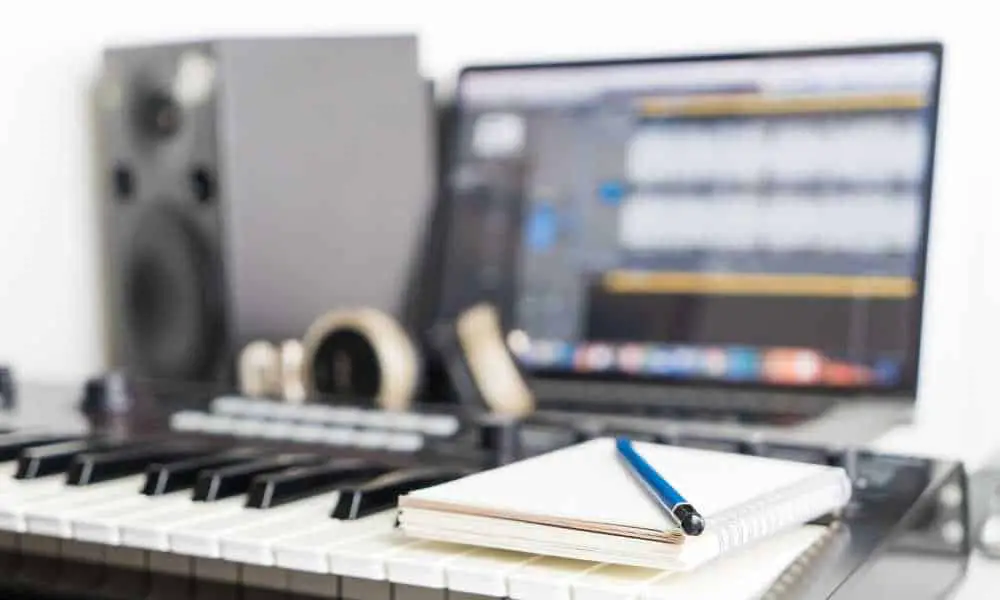As an Amazon Associate we earn from qualifying purchases.
Anyone who is not that knowledgeable about studio monitors often mistakes them for the regular loud speakers they find in every living room. The truth is, they’re not. They are way more advanced in terms of the features and the quality of the sound they produce. Sound monitoring is a crucial part of creating good music.
However, that doesn’t necessarily mean that you need really expensive ones to achieve the results that you are hoping for. There are affordable sets of studio monitors that can give you the quality that you want. For example, even with mediocre-quality monitors, you can still produce an excellent mix with the right monitor placement in a non-reflective room.
Table of Contents
Finding the Right Pair of Studio Monitors – What Size Studio Monitor Do I Need?
It is rather easy to go and get trapped in consumer mentality whenever you go shopping for anything and when it comes to monitor speakers, it’s more likely especially if you don’t have a lot of background knowledge.
If a dealer is doing a demo of the speakers using a Steely Dan record, then they’re probably ripping you off because that CD is flawlessly recorded to begin with. So, don’t get fooled that easily. You can ask them to play a different CD just to make sure or you can also check the unit for some helpful pointers.
These pointers answer the questions about what to look for in a pair of monitor speakers; questions like, “What size studio monitor do I need?”
-
Monitor Type
First of all, you want to know what type of monitor you want or need. There are two major categories to choose from – active and passive. Passive monitors tend to be modular. They usually require amplifiers and crossovers that match the speakers. Active monitors, on the other hand, already have all of these built in.
There isn’t any need for extra amplifiers or rack gears. You can go back and forth between the two as they’re both capable of creating great sound but if you want professional-level sound quality, you’d be better off with an active studio monitor.
-
Power
Power has a very significant effect on the end product of every mix that you create. Aside from its effect on the volume, the power also determines the dynamic range of the record. When you have higher wattage, you can hear even the transitory details.
The manner in which signal is being inputted to power the drivers is based according to its configuration. There are three types of configurations – single-amp, bi-amp, and tri-amp. For clearer and more defined sound quality, the better choice would be between a bi-amp and a tri-amp configuration. They have a more accurate and precise frequency response which makes the sound more powerful.
-
Subwoofer
Another factor that determines if a pair of studio monitors is good or not is its compatibility with a subwoofer. Adding a subwoofer is always a good idea, especially if you will be working on mixing sounds for TV or any multimedia files.
The important thing to think about is how your audience will be listening to your finished product. If it requires you to hear the lowest bass octaves, then you need a subwoofer for the job and a studio monitor that already has one would be the most practical choice.
-
Size
One of the things that you need to consider while choosing a studio monitor is the size. The most common monitors are a pair of near-fields that are usually used in close proximity.
This means that the size of the room is an important factor that needs to be considered as well. If it’s just a regular room at home, a pair of 5-inch monitors should do. If you will be working in a bigger room, you should consider getting a pair of 6-8 inches studio monitors.
Aside from these factors, which are obviously very important to consider, you should also be conscious about the price if the budget is going to be a big deal. Just remember that it doesn’t matter whether you get an expensive brand or not. As long as you know the components and what they’re for, you can create a working set that will give you the results you want.
Amazon and the Amazon logo are trademarks of Amazon.com, Inc, or its affiliates.
